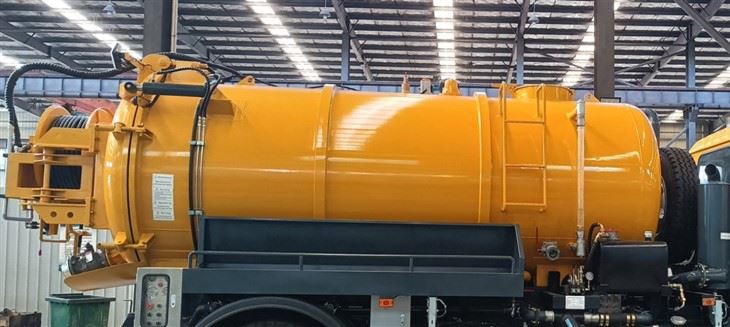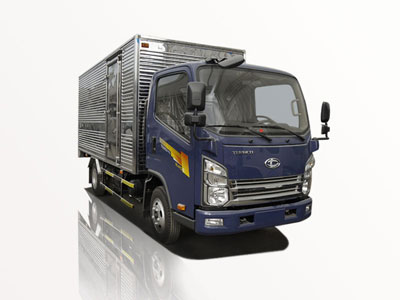In today’s world of diesel vehicles, proper maintenance of the exhaust system, particularly the diesel particulate filter (DPF), is crucial. Isuzu trucks and vehicles frequently utilize a regeneration process to keep the DPF clean. However, sometimes users encounter issues with the manual regeneration process. This article will dive deep into why the Isuzu manual regen might not be working, practical solutions, and tips for maintenance.
Understanding Regeneration in Isuzu Vehicles
What is DPF Regeneration?
The DPF is designed to capture and store exhaust soot to reduce emissions. Over time, as soot accumulates, the filter must undergo a cleaning process known as regeneration. This can happen automatically during normal operation or manually when necessary.
Types of Regeneration
- Passive Regeneration: Occurs naturally during regular driving when the exhaust temperature is high enough.
- Active Regeneration: Engine management systems initiate this process to raise exhaust temperatures when the DPF is becoming too full.
- Manual Regeneration: This is initiated by the driver through the vehicle’s controls when automatic regen fails.
Common Symptoms of Manual Regen Not Working
Identifying Issues
When the manual regeneration process isn’t functioning as it should, a few symptoms may be noticeable:
- Dashboard warning lights related to the DPF or engine management.
- Poor engine performance, such as sluggish acceleration.
- Increased fuel consumption.
- Unusual odors or smoke coming from the exhaust.
Diagnosing the Problem
Before attempting to troubleshoot, it’s important to diagnose the problem accurately. This may involve using an OBD-II scanner to check for relevant error codes.
Common Causes of Isuzu Manual Regen Issues
Faulty Sensors
One of the most common reasons for manual regen not working is faulty sensors. The DPF pressure sensor, temperature sensor, or other related sensors may malfunction, sending incorrect signals to the engine control unit (ECU).
DPF Blockage
If the DPF is excessively blocked, it may prevent the manual regeneration from occurring. This can be caused by driving habits, such as short trips that do not allow optimal exhaust temperatures.
Low Fuel Quality
Poor-quality fuel can affect combustion efficiency, leading to increased soot production. This may hinder the regeneration process by filling the DPF too quickly.
Engine Control Unit (ECU) Problems
Malfunctions in the ECU or its software can prevent the manual regen from triggering. It is essential to ensure that the ECU is updated and functioning correctly.
Driver Error
In some instances, the driver may be unaware of the correct procedure for initiating manual regeneration. Familiarizing oneself with the vehicle’s manual can prevent mistakes.
How to Troubleshoot Manual Regen Issues
Step 1: Check Dashboard Warning Lights
Begin by reviewing any warning lights on the dashboard. If there is a DPF warning light illuminated, this is your first clue that something is wrong.
Step 2: Use an OBD-II Scanner
Connect an OBD-II scanner to check for error codes. This can reveal specific issues related to the DPF, sensors, or ECU.
Step 3: Inspect the DPF and Sensors
Visual inspections of the DPF and associated sensors may provide insights into blockages or damage.
Step 4: Repair or Replace Faulty Sensors
If faulty sensors are identified, repair or replacement is necessary to restore functionality to the system.
Step 5: Educate Yourself on Manual Regeneration
Refer to the owner’s manual to ensure that the driver is following the correct procedures for initiating manual regeneration.
Practical Tips for Successful Manual Regeneration
Regular Maintenance
Ensure routine maintenance checks of the DPF and exhaust system. This can help catch potential issues before they escalate.
Use High-Quality Fuel
Opt for high-quality diesel fuel to minimize the production of soot and prolong the life of the DPF.
Driving Habits
Encourage longer trips where the engine can reach and maintain optimal operating temperatures, promoting passive regeneration.
Know When to Perform Manual Regen
If driving mainly involves short trips, plan regular manual regenerations proactively.
When to Seek Professional Help
Persistent Warning Lights
If warning lights continue to illuminate after troubleshooting, it may be time to seek professional assistance.
Complex Mechanical Issues
For more complex mechanical failures or issues beyond basic maintenance, take the vehicle to a certified Isuzu service center.
Cost of Repairs and Replacements
Estimated Costs for Common Repairs
| Service | Estimated Cost |
|---|---|
| DPF Cleaning | $200 – $300 |
| Sensor Replacement | $150 – $500 |
| ECU Reprogramming | $100 – $200 |
FAQs about Isuzu Manual Regen
1. How often should I perform manual regeneration on my Isuzu vehicle?
It is recommended to perform manual regeneration when prompted or if you notice a decrease in engine performance.
2. Will driving habits affect the need for manual regeneration?
Yes, frequent short trips may require more manual regenerations due to insufficient exhaust temperatures.
3. Can I prevent the need for manual regeneration?
Driving at higher speeds for longer durations can help facilitate automatic regenerations, reducing the need for manual interventions.
4. What should I do if my manual regeneration fails consistently?
If issues persist, have the vehicle checked at a professional service center for diagnostics and repairs.
5. Is it safe to drive with a faulty DPF?
While it may be possible to drive, it can lead to greater engine damage or reduced efficiency, so it is advisable to address the issue as soon as possible.
6. Can poor fuel quality impact DPF functionality?
Yes, poor fuel quality contributes to soot buildup, affecting overall DPF performance and life expectancy.



